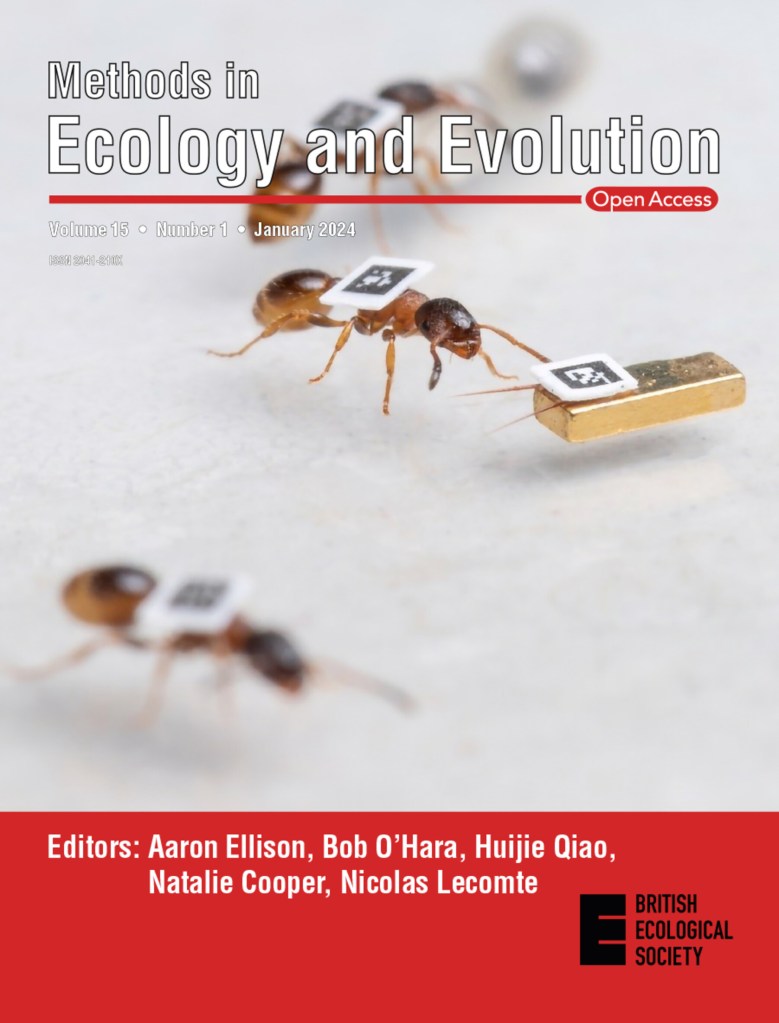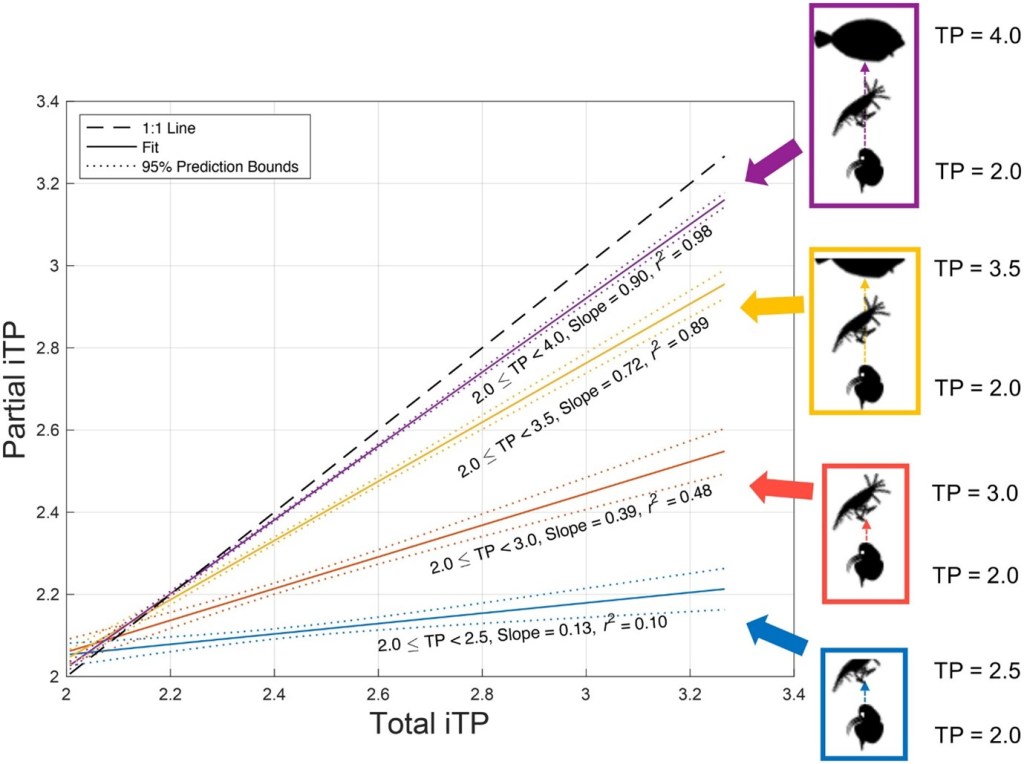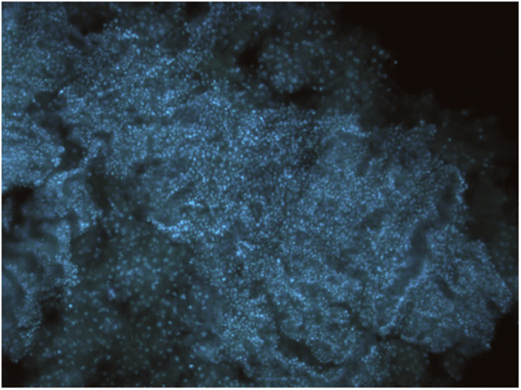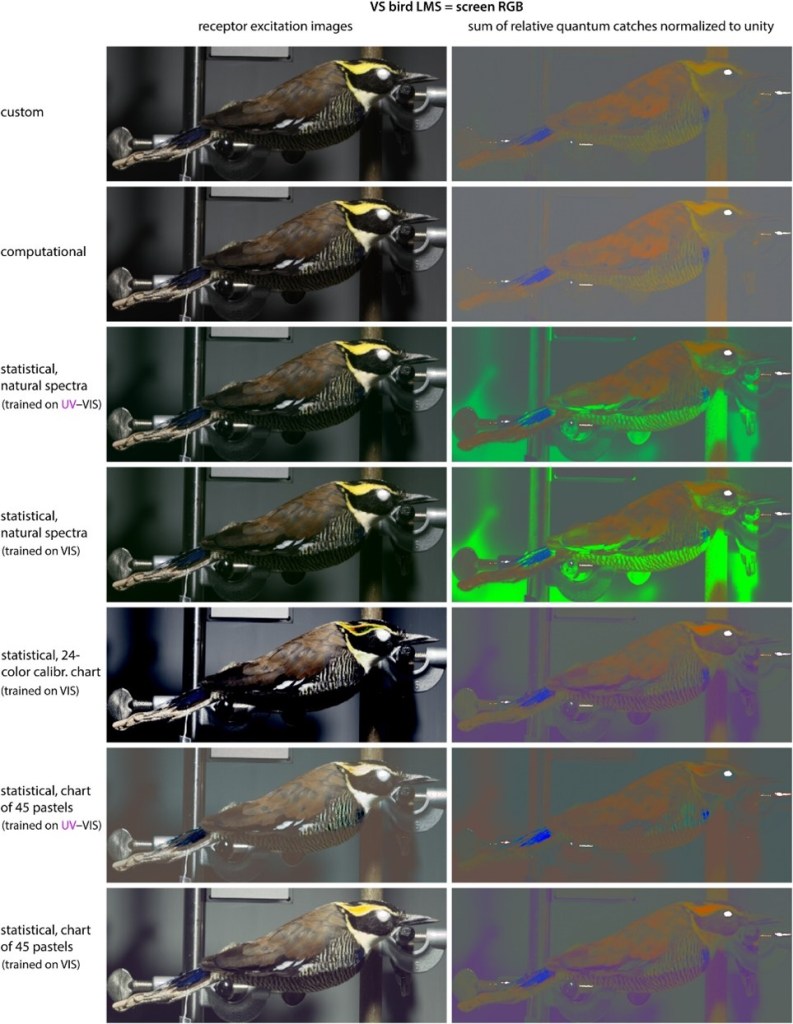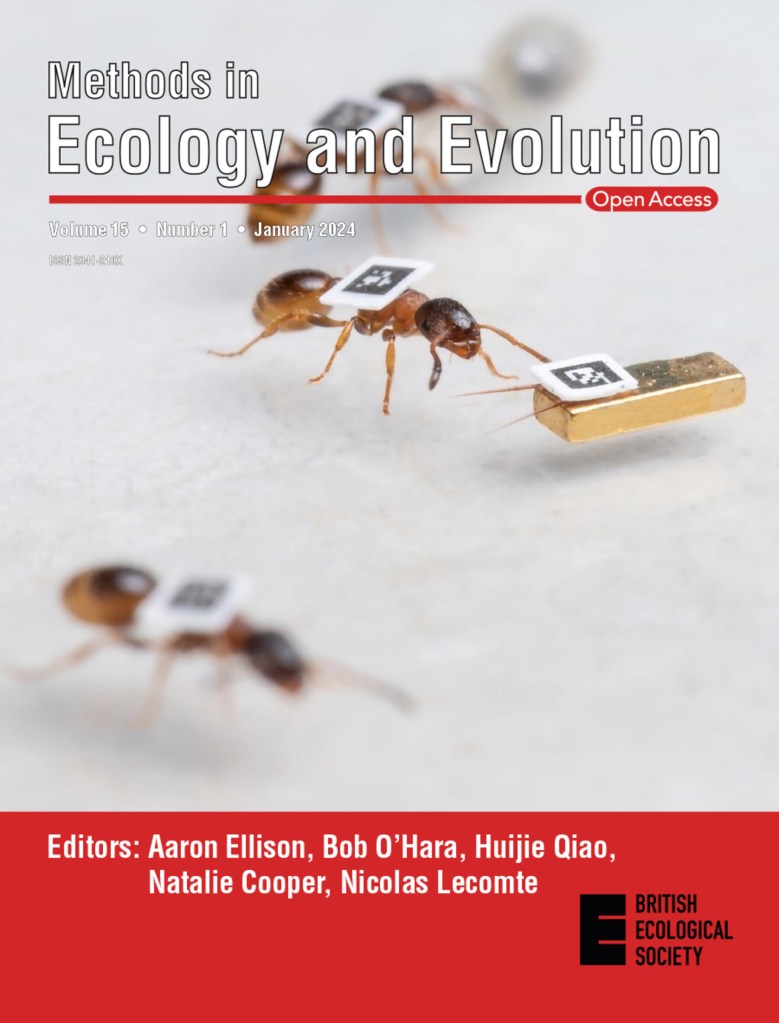This issue contains the latest methods in ecology and evolution, including automated tracking, unhatched eggs, quantifying colour vision and much more! Read to find out about this month’s featured articles and the article behind our cover!
Featured
There are two distinct approaches to describing the distributions of biomass and species in food webs: one to consider them as discrete trophic levels (TLs); and the other to consider them as continuous trophic positions (TPs). Bridging the gap between these two perspectives presents a nontrivial challenge in integrating biodiversity and food-web structure. Food network unfolding (FNU) is a technique used to bridge this gap by partitioning the biomass of species into integer TLs to compute three complexity indices, namely vertical (DV), horizontal (DH) and range (DR) diversity (D indices). Although our analysis is biased towards marine ecosystems, we revealed an exponential relationship between iTP and DV, suggesting that iTP can serve as a measurable proxy for DV.
Radar is an effective tool for continuous monitoring and quantification of aerial bird movement and used to study migration and local flight behaviour. However, systems with automated tracking algorithms do not provide the level of processing sufficient to guarantee reliable data. This article presents a post-processing framework that implements knowledge of the radar system and bird biology to filter the data and retrieve reliable, high-quality tracking data. The framework provides a logical workflow to increase the reliability and quality of a bird radar dataset while being adaptable to the radar system and its surroundings. This is a first step towards standardising the post-processing methodology for automated bird radar systems, which can facilitate comparative analyses of bird movement in space and time and improve the quality of ecological impact assessments.
Early embryo mortality has recently been proven to be a significant component of avian reproductive failure. Due to the difficulty in distinguishing eggs, which have suffered early embryo mortality from unfertilised eggs, this cause of reproductive failure has historically been underestimated and overlooked. This article describes methods for recognising and collecting early failed, unhatched eggs from wild bird populations, identifying and isolating embryonic material in unhatched eggs, and efficiently extracting DNA from those samples. Genetic and possibly genomic analysis of embryos that die early in development has the potential to advance many fields. The methods described here will allow a more in-depth exploration of the previously overlooked causes of early embryo mortality in wild populations of birds, including threatened species.
The combination of an efficient sampling method and high-throughput analysis of environmental DNA (eDNA) can be a powerful approach for characterising biodiversity across aquatic ecosystems. Plankton net tows are one of the oldest, simplest, and least expensive methods for seston and eDNA collection, but require laborious filtration steps which often lead to clogging and/or the introduction of contaminants. Our results demonstrate the promising potential of the modified cod-end to enable practical and cost-effective isolation of eDNA-derived biodiversity data from any vessel types (at ≤5 knots) across a large range of aquatic ecosystems and biogeographic scales.
Quantifying how colours stimulate animal eyes is an essential first step in many areas of biology, from behavioural and visual ecology to neuroethology. Although multiple methods exist, their relative accuracies remain untested, leaving researchers unsure which methods are most accurate and which might be unacceptably inaccurate. Here, this articles compares measurements from reflectance spectrometry and four camera-based techniques to ground -truth spectroradiometric measurements of radiance, using eight diverse visual systems.
The ants on the cover
This month’s cover image illustrates the ant-size dummy employed to provide standarized tactile stimulation to workers of the slender ant Leptothorax acervorum (also depicted). The dummy was a gold coated magnet with two rods representing antennas and operated within ant colonies via a robotic platform. In their article, Rüegg, Motes-Rodrigo et al. developed a new dual system combining this robotic platform and dummy with a custom-built automated tracking system to evaluate how conspecific density and the task an ant performs at a particular point in time influence workers’ responses to tactile stimuli. This system constitutes a valuable new tool to systematically investigate social insect behaviour under unprecedented experimental control to unravel the individual-level behavioural rules that underpin the organization of social insect colonies.The development of this system opens new research avenues to empirically investigate the effects of more complex stimuli on social insect behaviour and has the potential to significantly further our understanding of decentralized collective systems. © Bart Zijlstra, DEE, UNIL.


